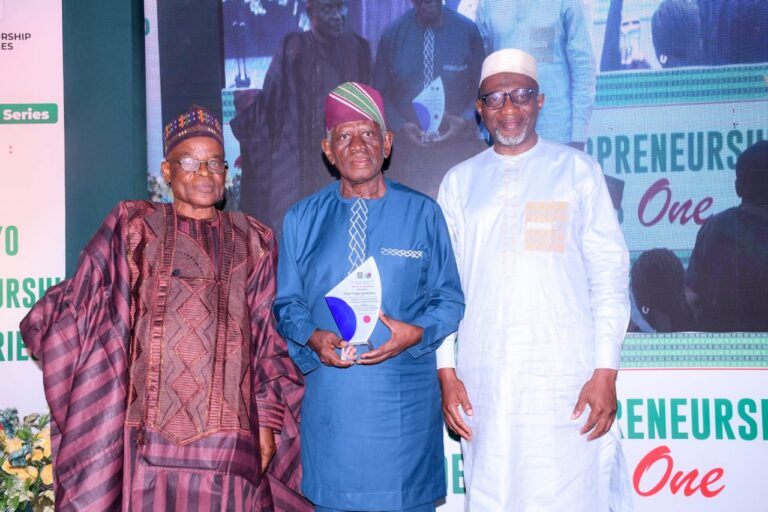At the maiden edition of the Folawiyo Entrepreneurship Centre Annual Lecture and Business Idea Competition, thought leaders and industry experts gathered at Yaba College of Technology, Lagos, to explore entrepreneurship as a cornerstone of sustainable national development. The keynote speaker, Chief Tunde Fanimokun—a former Lagos State Permanent Secretary and Chairman of DSE Foundation—outlined seven major challenges confronting Nigeria’s growth and proposed visionary leadership as the key to unlocking its immense potential.
Delivering a lecture titled “Entrepreneurship: The Central Pillar of Accelerated Sustainable Development in Nigeria,” Chief Fanimokun highlighted the chronic issues of mismanaged natural wealth, neglected agricultural development, overreliance on imports, disjointed economic structures, decades of wasted oil opportunities since the 1958 Oloibiri discovery, escalating youth unemployment, and weak leadership as core impediments to progress.
“Inexhaustible abundance is a divine gift, but without visionary leadership to harness it, nations remain stagnant,” Fanimokun declared, emphasizing that Nigeria’s development must be rooted in strategic entrepreneurship driven by both the public and private sectors.
He commended recent efforts by the Nigerian government to institutionalize entrepreneurship education through initiatives like the Enterprise Development Services, partially funded by the World Bank. These efforts, he noted, have made entrepreneurship a core subject at universities nationwide, laying a foundation for a more self-reliant economy.
In a compelling case study, Fanimokun spotlighted the leadership of the late Alhaji Lateef Kayode Jakande—former Governor of Lagos State and Federal Minister of Works and Housing—as a prime example of entrepreneurial governance in public administration. Jakande’s practical reforms in housing, education, and infrastructure were cited as groundbreaking and worthy of academic study in the field of management and innovation.
Fanimokun also used the life of Chief Yinka Iyanda Folawiyo as a testament to the transformative power of entrepreneurship. From humble beginnings as a student abroad, Chief Folawiyo returned to Nigeria to build a diversified business empire spanning banking, real estate, oil and gas, shipping, agriculture, and international trade. “His success story is an enduring symbol of what visionary enterprise can achieve on a global scale,” he remarked.
Chairman of the Yaba College of Technology Governing Council, Prof. Funsho Afolabi, described the Folawiyo Lecture Series as a springboard for future innovators and leaders. “This is more than a lecture—it’s a movement designed to cultivate job creators, not job seekers,” Afolabi stated, noting that the series carries the legacy of Chief Wahab Iyanda Folawiyo, a man whose entrepreneurial spirit continues to shape generations.
Rector of the institution, Dr. Ibraheem Abdul, praised the series as a dynamic platform for nurturing Nigeria’s future business leaders. “It is a tribute and a call to action—empowering youth with the integrity, innovation, and leadership values that Chief Folawiyo stood for,” he said.
The event underscored a central message: for Nigeria to overcome its socio-economic challenges, entrepreneurship must be redefined not only as a business venture but as a governance principle—where innovation, leadership, and public service converge to drive meaningful and inclusive development.


